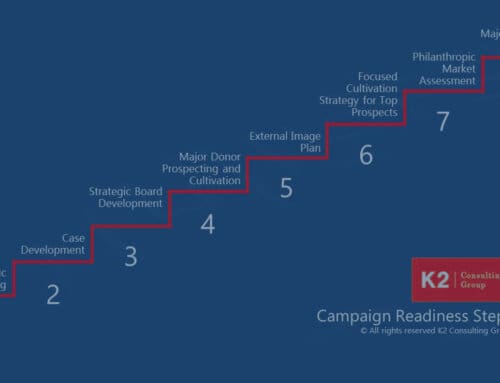It’s January! It’s time to act!
Giving trends for the previous year will be out soon. If the trend is anything like last year, the trends are very troubling. Nonprofits who pay attention and act will counteract the headwinds.
Here are the facts:
Giving was up in 2018 over 2017, but only due to large gifts. (Fundraising Effectiveness Project, FEP)*
- The number of households giving is decreasing while mega-gifts are increasing.
- Fewer households of moderate means are giving at all, while more of the money comes from those who are exceptionally well off.
- Nonprofits increasingly depend on a small number of wealthy super-donors rather than broader-based supporters.
This is a terrible trend for a sector built on broad support. Giving is becoming highly bifurcated, like the economy as a whole. And this hits small community-based organizations the hardest.
To retain donors of all sizes, you must shower your donors with gratitude like nothing else matters. Stand out from the pack. Decide to repeat giving very hard to say no to!
In two recent donor experiences, I had to demonstrate that this is not an easily understood concept.
One: An environmental organization with a new CEO and Director of Development is working at increasing support for a national park conservancy. I barely received my Giving Tuesday gift acknowledgment when the DOD sent me a personalized note of gratitude, shortly followed by an email from the CEO. When I responded to both, they were responsive and invited me for a park visit.
Two: An education foundation hosted an event for which we provided a small sponsorship. At the event, the Director of Development did not see our name listed nor recognize our names, even though we had communicated before. “Perhaps you are under another guest’s name?” she asked.
Nonprofits like the park conservancy are going to see their giving grow. My counsel to the second foundation is “Change before you have to,” famously said by former GE CEO Jack Welch.
IT’S THE START OF A NEW YEAR. STOP WHAT YOU ARE DOING AND MAKE THIS YOUR VERY FIRST PRIORITY.
You worked hard to raise money by year-end.
1. Look at every new and repeat donor and put yourself in their shoes.
What caused this person to respond to your solicitation and make a gift to your organization? Why did s/he decide to allocate discretionary money to your organization? What do you know, and what do you need to know about this person? How will you access the information?
2. Develop a fast plan for acknowledging these donors and start building a relationship. Delight them with an unexpected phone call.
Who will call this donor, or if you do have a phone number, send a personalized thank you note by email? The CEO, the DOD, a board member? I did this for a school client when a parent paid $1,000. I called the couple’s home to thank them, and after we finished the conversation, an additional $1,500 gift came in over the website – all within 24 hours.
3. Make a “we appreciate you” campaign a top priority for your CEO and board members.
Rough waters are ahead. Educate your board on these declining donor trends. Help them understand that it’s not business as usual for your organization, nor is their role as board members the same. You are all in this together, and they shouldn’t be surprised or learn about these trends from other sources and wonder why you didn’t inform them.
In the same way that board members receive prospect assignments for fundraising, start providing them with “donor thank you” assignments and train them on exactly the approach they should take with these select coveted donors.
4. Start countercyclical thinking.
Traditionally, nonprofits focus on philanthropic giving at the calendar and fiscal year-end, Giving Tuesday and the school year starts and ends, and more. Put this concept out of your mind! Concentrate year-round on retaining every one of your hard-fought donors. Develop a plan for demonstrating how important they are to you on multiple occasions throughout the year. Develop opportunities for deepening the relationship and keep track of these interactions, their responses, feelings, and reactions.
5. Technology is a blessing and a curse.
The reason small to medium-sized gifts are declining is that the tax deductibility incentive has gone away for people who do not itemize; many folks are feeling stretched and have less money to give and, I contend, are also giving to political campaigns and candidates (which might come from the same pot of discretionary money). For all of these small donors who are disappearing, likely 80-90% of them have made their gift online or by mail.
The curse of technology is that it removes personalization and relationship-building.
The blessing is that technology allows you so many ways to test, view, and understand what is important to your donors. Utilize all of these tools available.
Fundraising is undergoing a massive transformation. Organizations must course correct quickly.
Read the Fundraising Effectiveness Project Reports and contact K2 Consulting Group for counsel on keeping your donors and attracting new ones.
* Quote by Karen Lamb
Ready to get started on reaching your potential? Contact us to get started.







